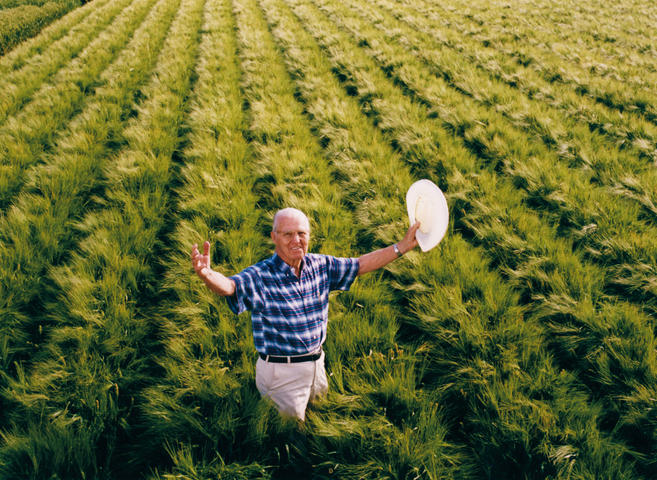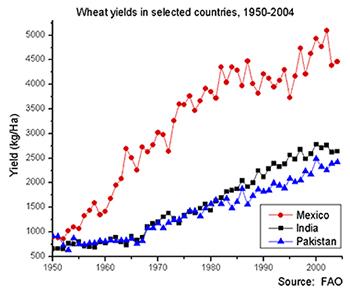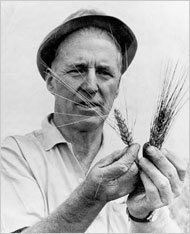
(International Commission on Irrigation and Drainage)
The Green Revolution was able to save millions of people from famine, but despite that there are still some critics towards the revolution. The Green Revolution began in the mid-20th century and was a large increase to the production of food grains, with emphasis on wheat. Norman Borlaug created a wheat variation that would resist a multitude of pesticides and would grow much faster than previous wheats. This became most evident in Mexico. It is argued that his efforts towards eliminating starvation is what ultimately bent history and saved millions of people. Though Borlaug has been praised for his work through various awards, there are still downfalls. Critics say poor farmers were not able to access the fertilizers and pesticides needed to grow the wheat variation and were left with a smaller yield.

(International Commission on Irrigation and Drainage)
Semi-dwarf wheat was created in Mexico in the mid-1940s-50s by Norman Borualg. Its goal was to help Mexico become more self-sufficient; previously Mexico could not sustain itself. This wheat variety is the founder of the Green Revolution.
The Semi-dwarf wheat holds multiple advantages over normal wheat. Semi-dwarf wheat is short and stocky as opposed to normal wheat which is tall and thin. If the normal wheat gets too top heavy, the head of the plant will fall then making it unusable. Since Semi-dwarf wheat is a shorter plant with a stronger stalk, it will not fall over if the grain head gets heavy. Another advantage that Semi-dwarf wheat has over normal wheat is its ability to grow quickly. Since it grows fast, more of it can be grown. The wheat is also less labor intensive because of the short, and tough stalk. It can be harvested by combines and other heavy machinery. The last thing Semi-dwarf wheat holds advantage over normal wheat is its resistance to wheat rust and is able to handle intense amounts of fertilizer when growing.
Mexico was able to become self-sufficient in 1956 with the help of Norman Borlaug's wheat invention. By 1963 Mexico became a grain exporting country. Mexico's wheat success was the stepping stone to relay this new development over to India in the 1960's. Before this, India was on the brink of famine. The wheat invention led to other grain advancements in Asia as well. To this day Norman Borlaug's wheat success in founding the Green Revolution is responsible for saving up to one billion people from starvation in unsustainable countries.

(CFANS)

Norman Borlaug and Wheat.
(New York Times)